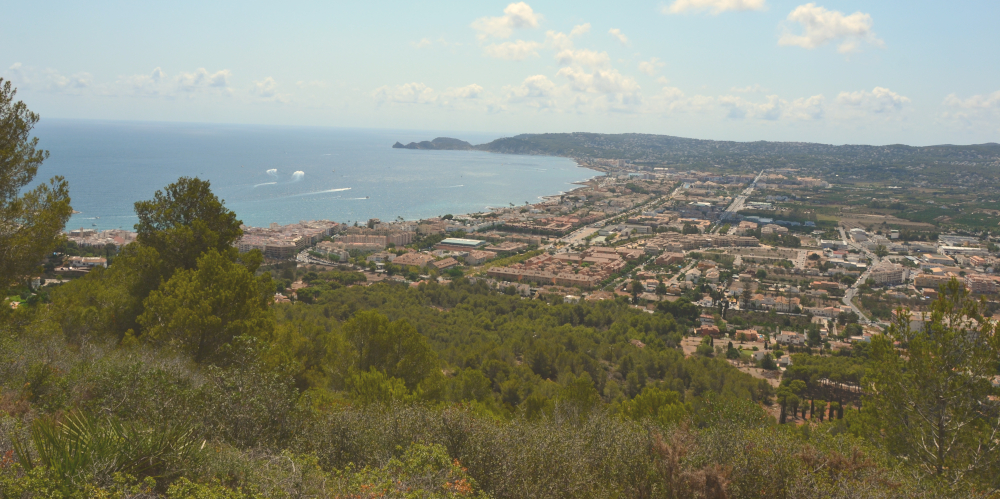Affordable housing project is not all it seems, claims report by La Marina Plaza
La Marina Plaza: “Why protected housing in Xàbia is a profitable business for the developer and not for the families who need it”

Earlier this month, Xàbia mayor Rosa Cardona signed an agreement with the Generalitat Valenciana for the transfer without charge of three municipal plots which would be used to build 64 affordable housing units in the town. The project forms part of the regional government’s Plan Vive initiative to provide affordable housing throughout the Comunidad Valenciana at a time when the average price of buying or even renting a home has reached record levels.
At the time of signing, the Generalitat’s Vice-President and councillor for Social Services, Equality and Housing, Susan Camarero, hailed the initiative as one which would “respond to one of the great concerns of citizens, which is the lack of housing. We are aware of the problem of access to housing suffered by young people and other sectors of the population and all our efforts are directed towards that“.
Read More: Valencia and Xàbia sign exchange of plots to be used for affordable housing
However, all is not it seems, according to the report published in La Marina Plaza entitled “Why protected housing in Xàbia is a profitable business for the developer and not for the families who need it”. The unnamed author claims that Xàbia has signed over – for free – valuable plots of land to a private construction company (the tender for the project closes in mid-March) which will be able to set sale prices well above affordable rates whilst the deal could also leave the municipality without 2.8 million euros in EU funding.
Having analyses the “small print” of the agreement, the report offers nine reasons that prove that the project to provide affordable housing for ordinary families will not be so and that it will be instead a great deal for the developer who will be awarded the contract.
1) Public Plots for a Private Company?
The Plan Vive initiative’s original concept was that the regional government would temporarily cede plots of land to property developers to build affordable rental housing (and only rental housing) funded by the EU which would revert back to the public administration after a determined period of time.
However, it seems that the current regional government, run by the Partido Popular (PP), has opted for something quite different. Known as a “exchange formula”, the property developer would keep the land in exchange for handing the local council a number of homes or square metres which will only be specified when the contract is awarded.
In other words, the report suggests, Xàbia has handed over – for free – public plots of land to help resolve the housing problem but in reality a portion of the houses built on those plots will end up in private hands, as well as those of the developer, and will remain in those hands forever.
Read More: Xàbia selected for launch of affordable housing scheme in Comunidad Valenciana
2) What can the construction company do with its share?
The property developer which wins the tender process (the deadline for submission of offers is open until March 13th) will have free rein over the portion of the 64 properties that it will reserve for itself. Indeed, the specifications approved by the Valencian Housing and Land Entity (EVHA), the autonomous public body responsible for the initiative, has stated that the only obligation of the winning company is to “use the plots exclusively for the construction of homes subject to the current public protection regime, which they may freely sell at the maximum price set in Decree 180/2024“.
This means that the winning company will be able to offer the properties for sale for a price of up to 2,400 euros per square metre, the maximum price for ‘officially protected housing (VOP)’ established by the regional government in September 2024. Simple arithmetic results in a price of 240,000 euros for a property of 100 square metres. With expenses added, it suddenly doesn’t seem to be a very affordable price, one well beyond the pockets of many ordinary families who are suffering the housing crisis first-hand and whose only option is to rent. Their only hope will lie with the currently unknown number properties that the developers will cede to the local council and will manage directly.
3) Loss of European Funds?
All these changes to the original concept of the Plan Vive initiative put some 25 million euros of EU Next Generation funding at risk of which almost 3 million euros would be destined for Xàbia. This funding of the project relies on the caveat that it would only be granted if it is destined exclusively for social rental projects.
4. A plot that is worth more than it seems?
The report also reveals the value of the three plots ceded by Xàbia outlined by the project documentation. The two plots located in Calle Garcilaso de la Vega, totalling 1,892 square metres and on which 22 homes can be built, are valued at 124,000 euros. The third plot in Calle Poeta José Albi – 3,877 square metres on which 44 home can be built, is valued at 164,303 euros. Thus, the three plots in total are valued at 288,524 euros.
However, values established in the Property Registry for the three plots are also attached to the project documentation and show that the value of the larger plot in Calle Poeta José Albi is actually 484,226 euros, far more than the project valuation, and that’s without taking into account the actual value of the plots in Calle Garcilaso de la Vega which are not given.
Consequently, it is suggested that the successful bidder will acquire a much more valuable asset than the project documentation stipulates.
Read More: Mayor signs over plots for affordable housing project
5) Profit margins for developers?
The original concept of the Plan Vive initiative envisaged that the land would always remain public property; it would simply be ceded to a property developer to build the properties and manage them under a concession of 55 years during which time it would be responsible for collecting rent. At the end of concession period, the plots would return to public ownership.
However, property developers were not interested in this unprofitable arrangement and none of them bid for the tenders that were available in Xàbia and other towns in the Comunidad Valenciana. Consequently, the regional government turned to an “exchange formula” which would be more favourable to the interests of the real estate sector.
6) Public housing for only 15 years?
Consequently, the property owners would only be obliged to keep them under the public protection regime for a maximum period of 15 years (or even shorter if the regional government determined so), after which they could be sold freely and for more than 2,400 euros per square metre.
7) What if the bank keeps it?
During the construction of the properties, if the developer is unable to meet repayment obligations on loans taken out to build them, such as in the case of a company going insolvent, the bank could carry out the foreclosure and be released from the obligation to place the properties under the public protection regime or cede part of the them to the local council. Thus, it would be necessary to hope for the solvency of the winning bidder.
8) What do they say in Xàbia?
The policy changes to the initiative were approved during a plenary session in Xàbia last November. However, the PSOE opposition had already warned that the new system would not contribute to ending the housing crisis because the properties that would be built would end up costing close to 300,000 euros to buy, a price out of reach of many ordinary families. They argued that the only real solution was to keep the plots in municipal hands to directly allocate social rental housing and that there was money in the municipal coffers to cover this.
However, despite the arguments against approval, the local executive tripartite of PP, CPJ and Vox voted in favour of the changes which allowed the transfer of the plots to the regional government earlier this month and sources in the executive told La Marina Plaza that it was better to explore this new route that sit idly by in the face of such a serious problem, that a decision needed to be made now.
9) What does the regional government say?
In compiling the report, La Marina Plaza consulted the Department of Housing which defended the new “exchange formula” system with the following arguments:
- The reason for the policy change was the six of the eight tenders offered for rental-only housing, which included Xàbia, were unsuccessful and that the new system attempts to avoid this happening again by “guarantee the viability of the construction of protected public housing in these municipalities“.
- The departmental source suggested that rentals are in huge demand in large cities – the tenders in Benidorm and Valencia were successfully completed – but the demand was less so in those town where the tenders were not successful.
- However, the department maintains that the “exchange formula” system leaves all options open since it allows for renting and renting with an option to buy as well as selling.
- The specifications of the project establish the minimum and maximum limits that the successful property developer can offer to the local council as well as awarded more points in the tender appraisal process to those prospective companies which offer more homes to the local council.
- Finally, the department has made assurances that the EU funding had not been lost but would be redirected to other projects such as the direct promotion of EVHA actions or open calls for proposals from local council. However, it is not clear whether the 2.8 million grant that was allocated to Xàbia would still be valid or whether it would be reinvested into other municipalities in the Comunidad Valenciana.





